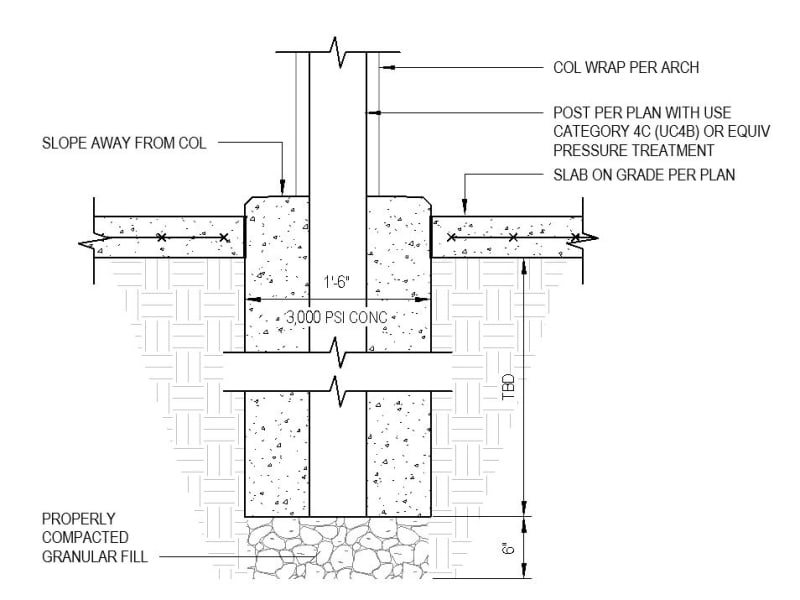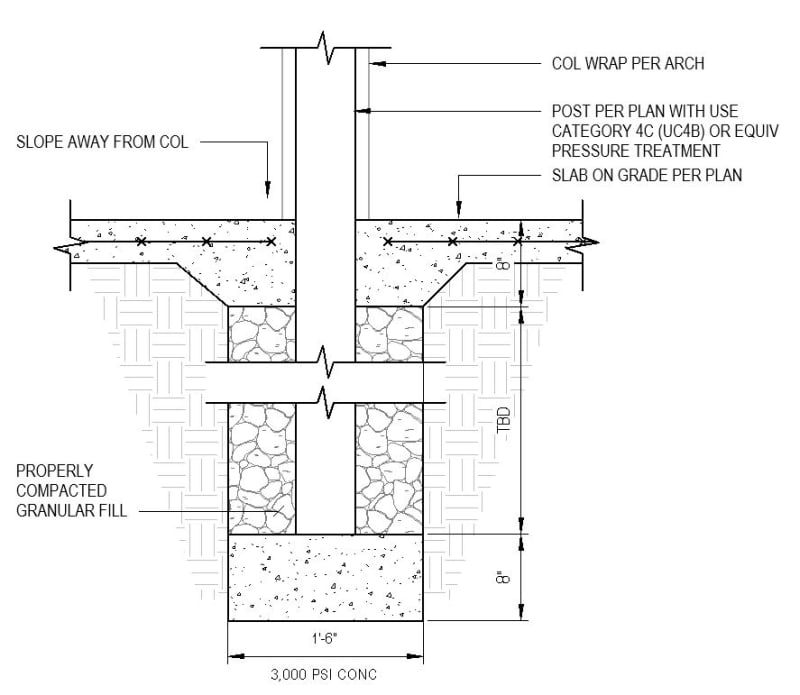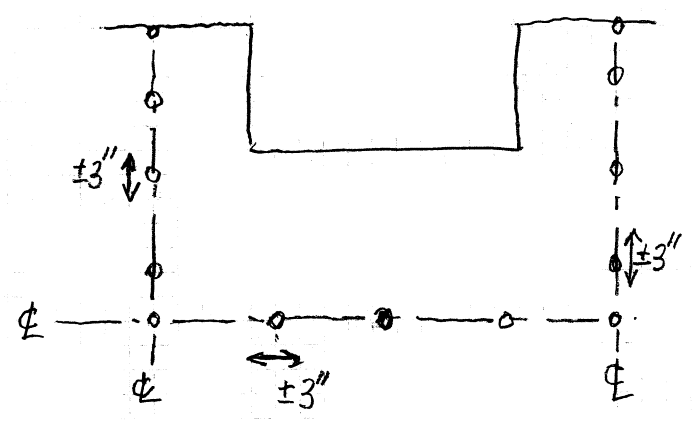T_Bat
Structural
- Jan 9, 2017
- 213
Hey everyone,
I've got another wood building I'm looking at with a large covered porch/patio. The arch wants to avoid knee braces so I'm looking into doing an embedded wood post. Obviously some people say "no way - you are asking for trouble" but it seems this type of detail has been used with success in the past. I'm proposing to embed the posts (or as many as is economical and works for design). I've attached a sketch and an overall. Normal wind speed here and SDC C. My main questions are:
1. Is there a special preservative treatment I need to specify or does the typical stuff work here?
2. Any benefit of coating with a mastic coating? maybe extend up the post a bit (they will be wrapped)?
3. Seems I need to make sure the end that's embedded is treated (no cut ends down there).
I know there have been other threads on this topic but they seems to be for utility type buildings or smaller structures (not that this is huge or anything). Any comments on the detail are appreciated.
Thanks!
I've got another wood building I'm looking at with a large covered porch/patio. The arch wants to avoid knee braces so I'm looking into doing an embedded wood post. Obviously some people say "no way - you are asking for trouble" but it seems this type of detail has been used with success in the past. I'm proposing to embed the posts (or as many as is economical and works for design). I've attached a sketch and an overall. Normal wind speed here and SDC C. My main questions are:
1. Is there a special preservative treatment I need to specify or does the typical stuff work here?
2. Any benefit of coating with a mastic coating? maybe extend up the post a bit (they will be wrapped)?
3. Seems I need to make sure the end that's embedded is treated (no cut ends down there).
I know there have been other threads on this topic but they seems to be for utility type buildings or smaller structures (not that this is huge or anything). Any comments on the detail are appreciated.
Thanks!

![[idea] [idea] [idea]](/data/assets/smilies/idea.gif)
![[r2d2] [r2d2] [r2d2]](/data/assets/smilies/r2d2.gif)


